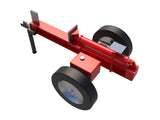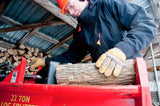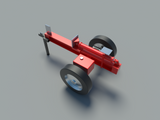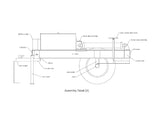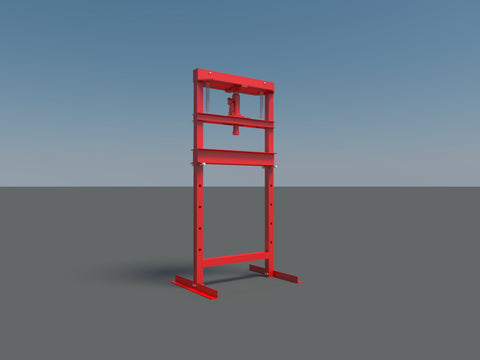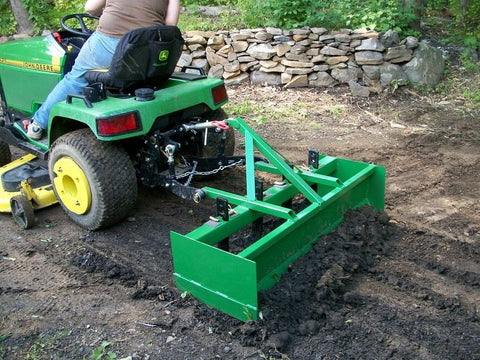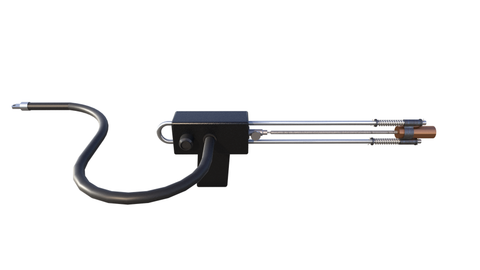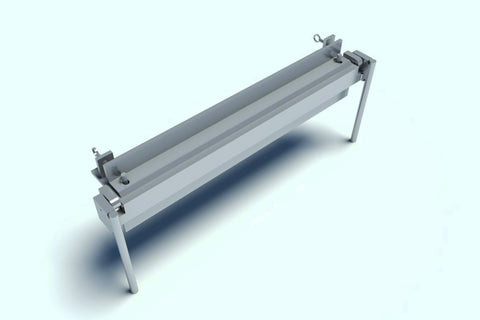Build Your Own Log Wood Splitter DIY Plans - Firewood Wood Cutter Building 20 Ton
These DIY Plans are for a 20 ton log wood splitter. I use mine at least twice a week. Even with my disability I find it very easy to use. I designed it to be powered by a 5hp engine. It has a hitch so that you can tow it anywhere. It will handle logs up to 24" long. These are modern drawings produced using AutoCAD software to ensure accuracy. Build it yourself! DIY
What Is a Log Splitter?
If you have been contemplating purchasing a log splitter, there are several things you should know. First of all, you should always read the warranty policy carefully. Log splitters can be dangerous if not used correctly, so it is crucial to choose one that is reliable and durable. This article will help you determine which model is best for your needs. Also, we will look at safety and reliability, as well as the cost.
Safety of using a log splitter
The safety of using a log splitter is paramount. Log splitters differ greatly in their designs and functions. The safety features you're accustomed to may not apply to a new log splitter. It's important to properly maintain your log splitter so that it continues to work smoothly. Before each use, check for leaks. Before each use, check the fuel tank for dripping or locked supporting beams. Never use your legs to stabilize the logs. Whenever loading a log into a log splitter, hold the log centered and remove your hands as soon as the wedge hits it.
Reliability
When buying a log splitter, reliability is one of the most important factors to consider. If you are unsure of how durable a certain machine is, you should watch a video review to find out whether or not it is reliable enough. EPA certified and CARB compliant, this machine will deliver maximum performance and durability. It is also backed by a network of service centers to ensure that it remains in top condition. You can also count on a two-year limited warranty and free lifetime technical support.
Durability
Before purchasing a log splitter, you should think about its durability. Log splitters are heavy-duty tools that cut through logs and large wood pieces. Because of the wear and tear they face, it's important to choose a durable machine. Manufacturers of log splitters typically provide warranties. The warranties for gas, electric, and manual models range from one to five years. When choosing a log splitter, it's best to consider how many months of usage you'll be making it.
Cost
The cost of a log splitter is largely dependent on whether the individual intends to use it for professional or domestic purposes. A basic model will require lower power, thrust, and force. Professional lumberers, on the other hand, will need more advanced models. Considering these factors, the best way to compare log splitters is to choose a log splitter that matches your needs. Listed below are some of the most popular types of log splitters and the prices they charge.
Tonnage
When buying a log splitter, one of the most important factors to consider is tonnage. The tonnage of a log splitter is the amount of force it can apply to a log. As a rule of thumb, larger logs will require more force to split. To find the tonnage of a log splitter, simply multiply the diameter by 3.14. A log splitter that has a higher tonnage will be easier to split, but a lower tonnage machine will not be as effective.
Return cycle time
Cycle time is the length of time that a log splitter takes to complete one cycle. A log splitter's cycle time varies depending on the type of wood, its hardness, and the knot count. While the faster the cycle time, the better, a slower cycle time might be fine for the average user. If you're looking to split logs frequently, you'll want to consider the maximum GPM that a log splitter can achieve.
All plans are designed by Ben Stone. Ben is a retired Engineer in Canada. Ben also drafts these himself using the latest AutoCAD software to ensure accuracy. He studied Engineering back in the early 1980's. After over 30 years in the Construction industry he developed a passion for building cool items around his farm and cabin. These are great DIY projects. With a little skill anybody can Do It Yourself. Ben is always a email away if you have any questions while building one of his projects. He is adding new plans all the time.


